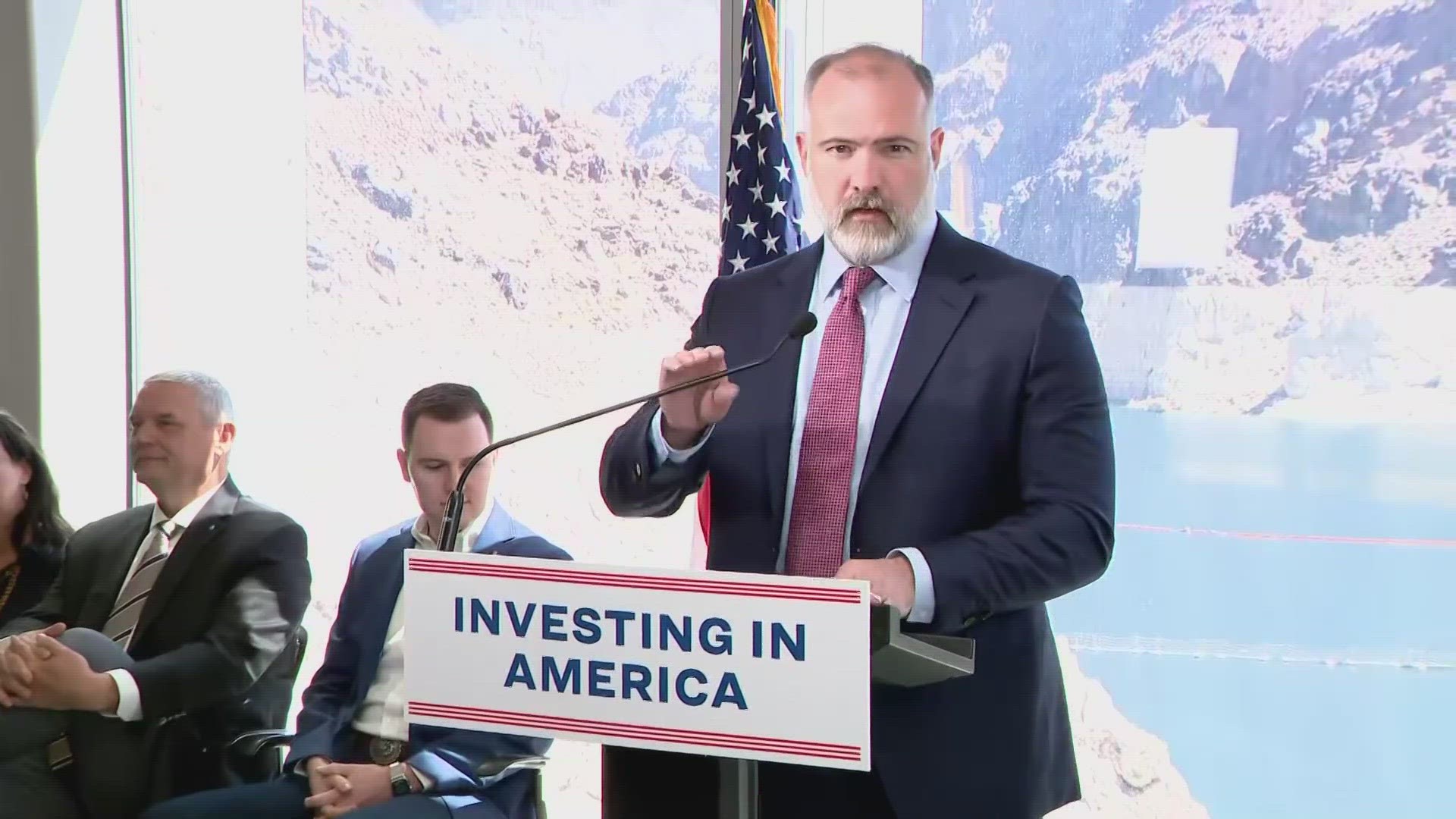ARIZONA, USA — A bill is coming due for Arizona, California and Nevada. The bill will be paid in water cuts felt by millions, but exactly how the cuts will be made is still unclear.
The Bureau of Reclamation issued a draft "Supplemental Environmental Impact Statement" (SEIS) on Tuesday for the over-allocated Colorado River.
The draft addressed the continuing megadrought throughout the Southwest U.S. by deciding how to best cut water from the three states on the river's lower basin in the coming years. The bureau will then create new guidelines for operating the river once current guidelines expire in 2026.
How exactly the water cuts will happen is still up in the air, but three possibilities were put forward in the SEIS. Both of the alternative water cuts include fewer releases from the already dwindling Glen Canyon Dam at Lake Powell to keep Hoover Dam running at Lake Mead. However, each of the alternatives also results in greater economic and water losses for Arizona.
EXPERTS' REACTION: Arizona water experts explain coming Colorado River cuts
The potential actions include:
- Alternative Action 1 - Lower Basin cuts based on water rights priorities: This alternative action forces more water cuts among Arizona, California and Nevada based on the priority of water rights, along with reduced water releases from Glen Canyon Dam.
- Alternative Action 2 - A sweeping water cut at a set percentage for all Lower Basin water users: This alternative action would force more water cuts among Arizona, California and Nevada distributed at the same percentage across the board, along with reduced releases from Glen Canyon Dam.
- No alternative action: This action would continue current river cuts and operations, including additional water releases from Glen Canyon Dam.
The full draft outlined the specific impact Arizona could expect from the plans.
With no plan, Arizona is the only state to experience socioeconomic losses, with California and Nevada seeing no impacts. Arizona would see a max ~178,000 acre-foot water shortage and would be expected to have a max $116 million loss in agriculture production, a $108 million loss in income, and just over 1,600 jobs lost.
Arizona's losses become more dire under the alternative action plans proposed in the draft. Arizona would see a max ~741,000 acre-foot water shortage and would face more than a $264 million loss in agriculture production, a $452 million loss in income, and just over 7,000 jobs lost.
However, the hurt would also be shared by California and Nevada under the alternative action plans. California would face a max ~843,052 acre-foot water shortage and see a max $486 million agriculture production loss, $185 million income loss and just over 2,900 jobs lost. Nevada would see a max ~160,000 acre-foot shortage and a max $316,000 production loss.
In response to the SEIS, Arizona's water officials and senators shared a common sentiment: all states which rely on the Colorado River need to work together to face the crisis.
“We need all Colorado River states to come together and do their part," Arizona Senator Mark Kelly said. "Today’s announcement underscores the urgent need for basin states to take the lead by coming to a long-term agreement to protect the Colorado River system."
"Management of the Colorado River demands real leadership – and most importantly – compromise so Arizona and the entire West can continue to grow and thrive for generations to come," said Arizona Sen. Kyrsten Sinema.
The Arizona Department of Water Management and the Central Arizona Project (CAP) echoed this sentiment in a joint statement, saying that sharing the drought burden will be necessary moving forward.
"We keep saying we're in this together, but there were no cuts mentioned for Upper Basin states," CAP President Terry Goddard said. "It's going to take everyone at the table."
The announcement was made after federal officials issued a deadline for states last June. The ultimatum urged Arizona, California, Nevada, Colorado, Utah, New Mexico, and Wyoming to come together and figure out how to cut two to four million acre-feet of Colorado River water in order to keep the river flowing.
States failed to meet the call to action before the deadline. One plan was agreed upon by every state except California, which issued its own plan in response.
PREVIOUS COVERAGE: California is lone holdout in Colorado river water plan
The SEIS marks the next step of federal officials acting on their promise to force cuts in lieu of a unanimous agreement between states.
Read the full draft SEIS here:
Water Wars
Water levels are dwindling across the Southwest as the megadrought continues. Here's how Arizona and local communities are being affected.

